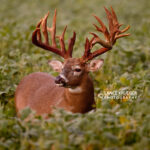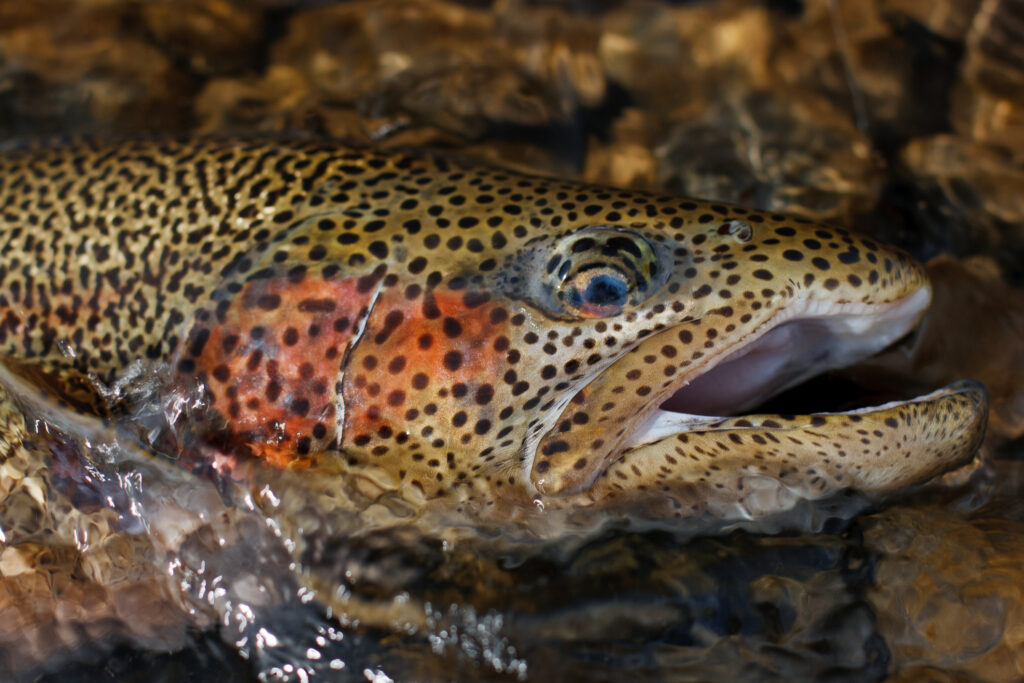
Trout, those colorful and captivating creatures expertly darting through streams at Briarwood Sporting Club and through other Ohio waters, possess many adaptations that suit their aquatic life. Their vision plays a critical role, especially when it involves the perception of color – and that matters to all of us who are pursuing them on the fly! Let’s dive into how these fish experience the world visually and what research has to say on the matter. A primary focus of my Master’s research at The Ohio State University centered on fish vision which has continued to drive my interest nearly 40 years later.
How do trout perceive color? Bear with me as we dig into some science.
Unlike humans, trout have vision tailored to their watery home, enabling them to detect a range of colors. This capability is crucial in the murky or clear waters they often inhabit. And we have those varying conditions at one of the midwest’s premiere fishing clubs, Briarwood, located in Bellfontaine, Ohio. The retina of a trout’s eye is rich in cones, the cells responsible for color vision in bright light. These cones contain pigments sensitive to different wavelengths of light, thereby allowing trout to perceive various colors across the spectrum, but primarily in the blue and green wavelengths. However, it’s important to note the differences in their environment. Underwater scenes have a distinct light quality, and colors can appear muted or quite different. Despite these variations, trout’s color vision helps them in distinguishing prey, navigating their habitat, and even recognizing other trout.
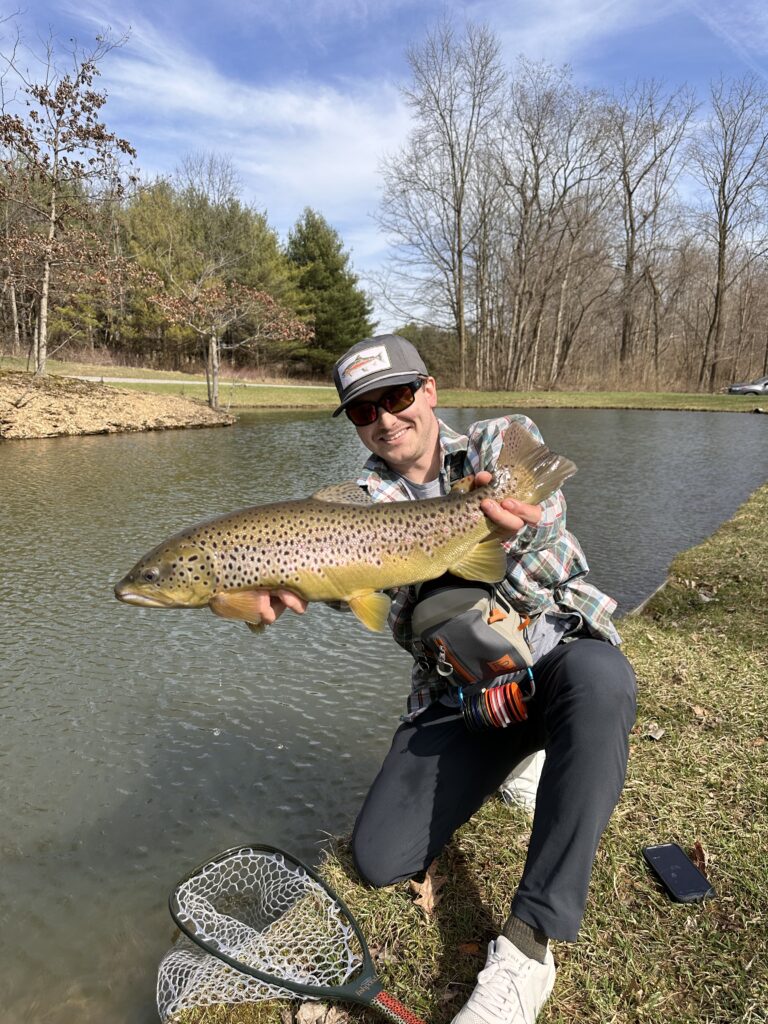
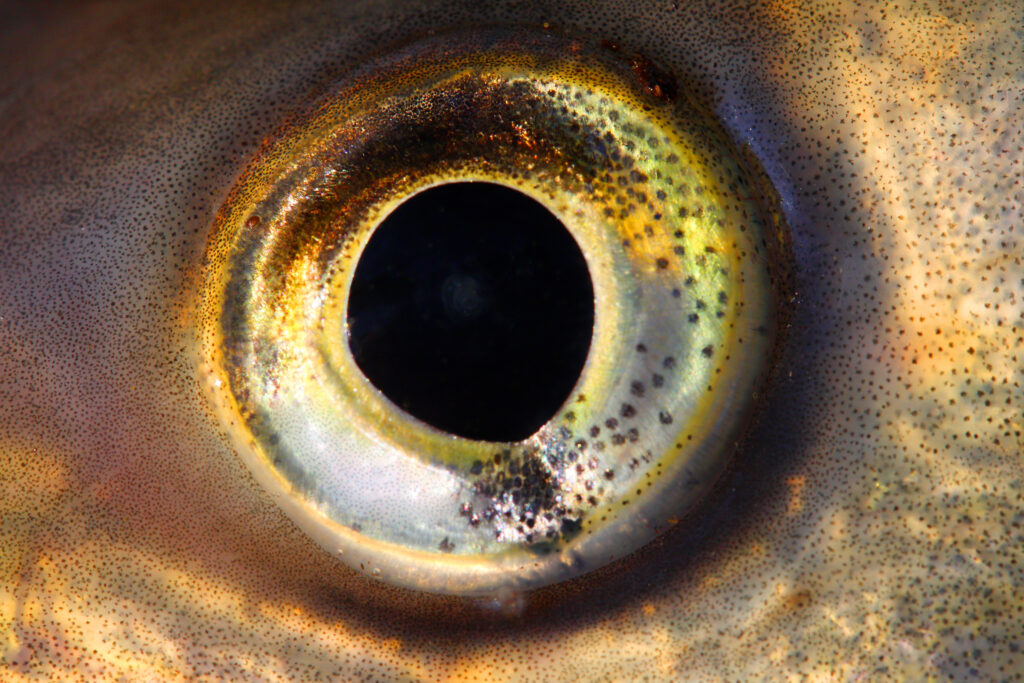
Yes, some more science…but it is essential…
Researchers have long been intrigued by the ability of trout to see colors. And if you want to hook some of these Ohio trout, you should care about this too. Various studies conducted over the years have shed light on just how sophisticated trout color vision is. One such study in the Pacific Northwest explored how different species of trout respond to natural prey and colored flies under varying light conditions. The findings revealed that trout do have a preference for certain colors, which can change depending on the available light and water clarity. Also, electro-chemical tests on trout eyes have clearly indicated trout can see a wide range of colors. These studies reflect a complex system of color detection in trout, and how they react to various colors, proving trout can interpret colors. This is vital to us fly anglers.
So what does this mean about their feeding?
Color perception significantly influences the feeding behavior of trout. These fish often rely on visual cues to identify and select prey. For example, certain insects that trout feed on may exhibit bright colors during specific life stages, making them more visible and, therefore, more likely targets. Furthermore, the ability to distinguish colors helps trout identify priority prey foods vs. non-food items, or lower nutrient prey. This keen sense of sight and color perception means that the color of flies we throw at them can make a difference in successful trout fishing in Ohio. Indeed, this is a constant topic of conversation at Briarwood with our members, not just the fly you are using, but what color. Sometimes trout will change their color preference during the same day!
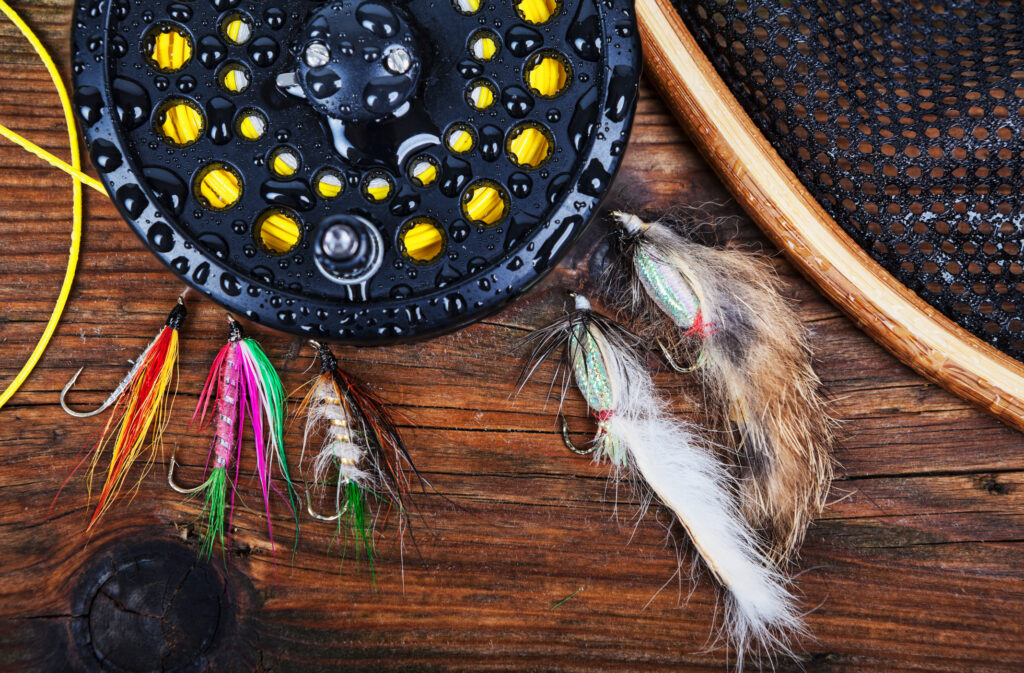
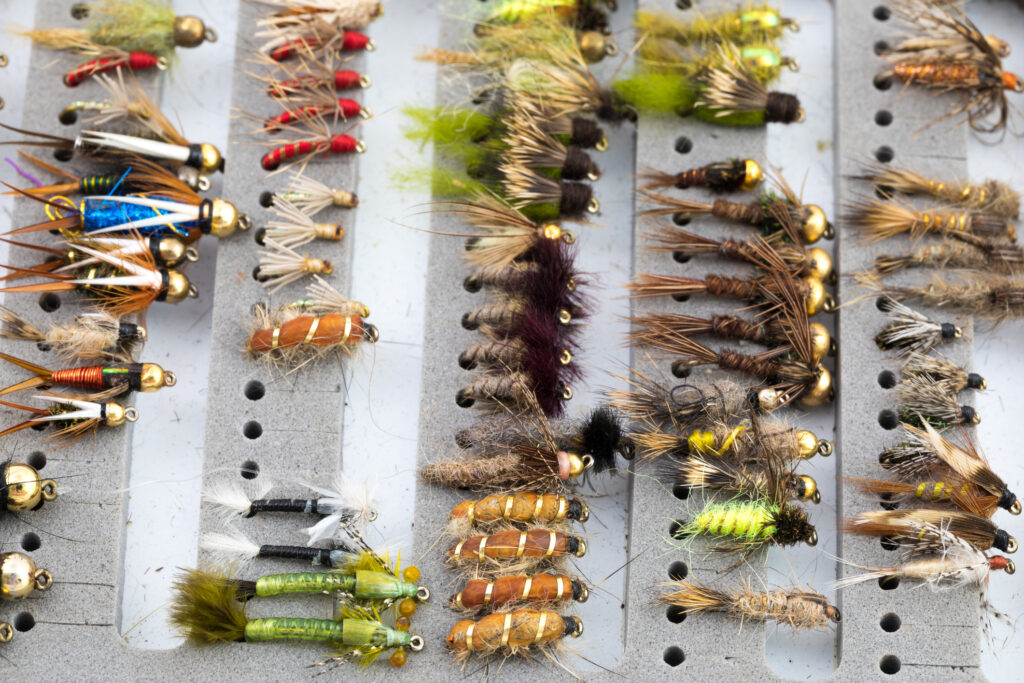
Ah yes, let’s now focus on fly selection – what and when…
So as anglers, we now understand that the color vision of trout is in fact, important; it impacts the selection of flies. Seasoned anglers know that “matching the hatch”, or using flies that mimic the color and appearance of local prey, can significantly increase the chances of attracting trout. For example, at Briarwood we know that the trout will react to flies that have colors akin to crayfish, stoneflies, mayflies, chironomids, grubs and a host of terrestrials like grasshoppers, beetles, ants, or various worms that may fall in the water. Moreover, considering the light conditions and water clarity can guide the choice of lure color to ensure it stands out or appears natural to the trout, depending on the desired approach.
Selecting the right colored fly is speaking the visual language of trout. Trout are most sensitive to blue and green light spectrums, with some species also quite sensitive to ultraviolet (UV) light. When choosing flies, in addition to matching prey coloration, consider the following tips:
- Bright colors for clear conditions: In clear, shallow waters, use flies that are bright and vibrant, such as blues, greens, and silver. These colors are more likely to catch the eye of trout in such environments.
- Contrast is key: Regardless of the color, contrast is vital. In murkier waters, even if the fish are less likely to distinguish the specific color, a strong contrast against the background can attract their attention. Black, white, or brightly colored flies that starkly contrast with the water can be effective.
- UV flies for depth: For fishing in deeper waters, consider using flies that incorporate UV reflective materials like thin metallic materials and sheens. These can be more visible to trout at depths where standard colors might not penetrate as well.
The effectiveness of your colored fly also depends significantly on how and where you present it in the water. Consider these best practices:
- Streamers and wet flies: Since these are below the surface, color matters the most with these vs. dry flies, but color does matter with the dries, just not as much.
- Clear waters: In clear conditions, opt for a subtle presentation. Trout have keen eyesight and can be wary of anything that doesn’t look natural.
- Murky waters: In turbid waters, a more aggressive presentation might be necessary to get noticed. Pair this approach with lures that offer strong visual contrast or vibrations.
- Dawn and dusk: In low light conditions, trout rely more on silhouette than color. Use lures that create a distinct outline against the lighter sky reflected in the water surface
- UV flies for depth: For fishing in deeper waters, consider using flies that incorporate ultraviolet reflective materials like thin metallic materials and sheens. These can be more visible to trout at depths where standard colors might not penetrate as well.
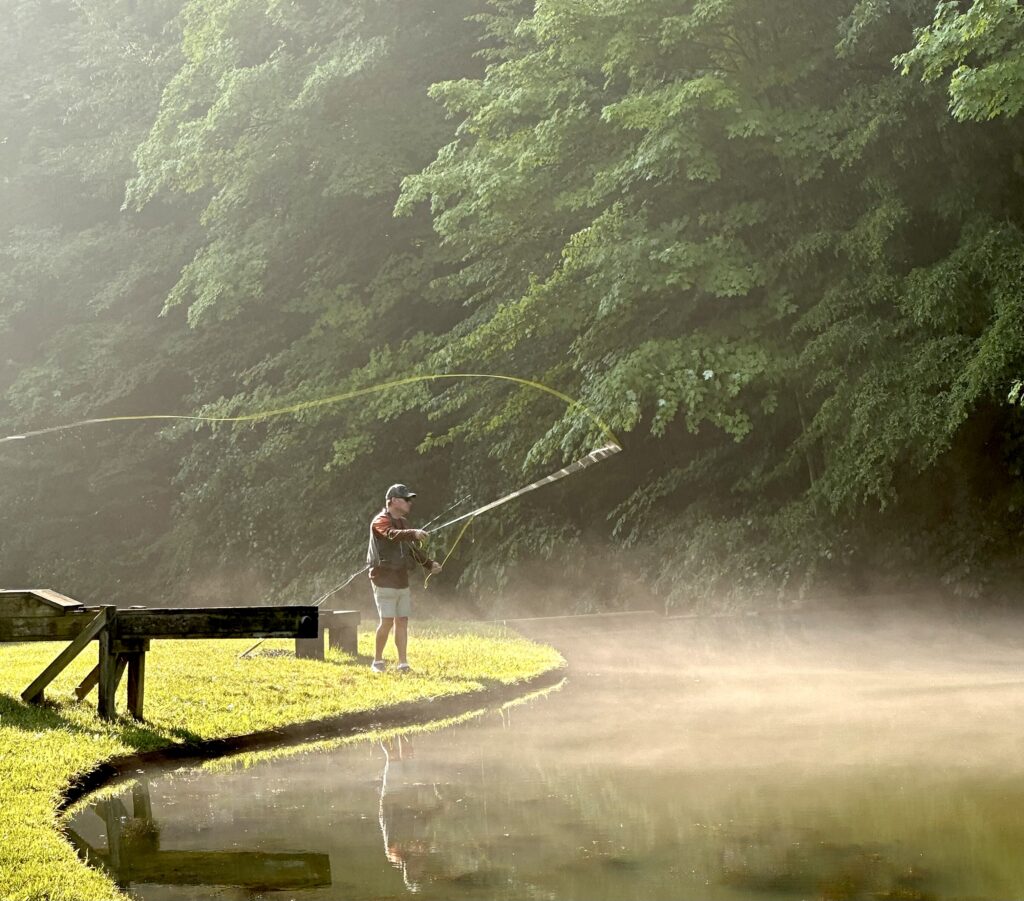
Anything else I should keep in mind?
Ultimately, success in fishing is about understanding your target and its environment. Here are additional tips to consider:
- Experiment: Don’t be afraid to experiment with different colors until you find what works best in your specific fishing spot. What works can vary daily based on numerous environmental factors.
- Seasonal changes: Be cognizant of how seasonal changes affect water clarity and light penetration, adjusting your choice of fly colors accordingly. In the end, matching the hatch can be trumped by other factors, so don’t get stuck with that practice alone.
- Keep it natural: When in doubt, opt for lure colors that mimic the natural prey of trout in the area.
- Go with your gut and what you heard has been working: Tie on what you know has worked for the season and the conditions prior. Don’t be afraid to ask that next angler you walked by. What is the worst they can say? Fly anglers are usually very willing to share.
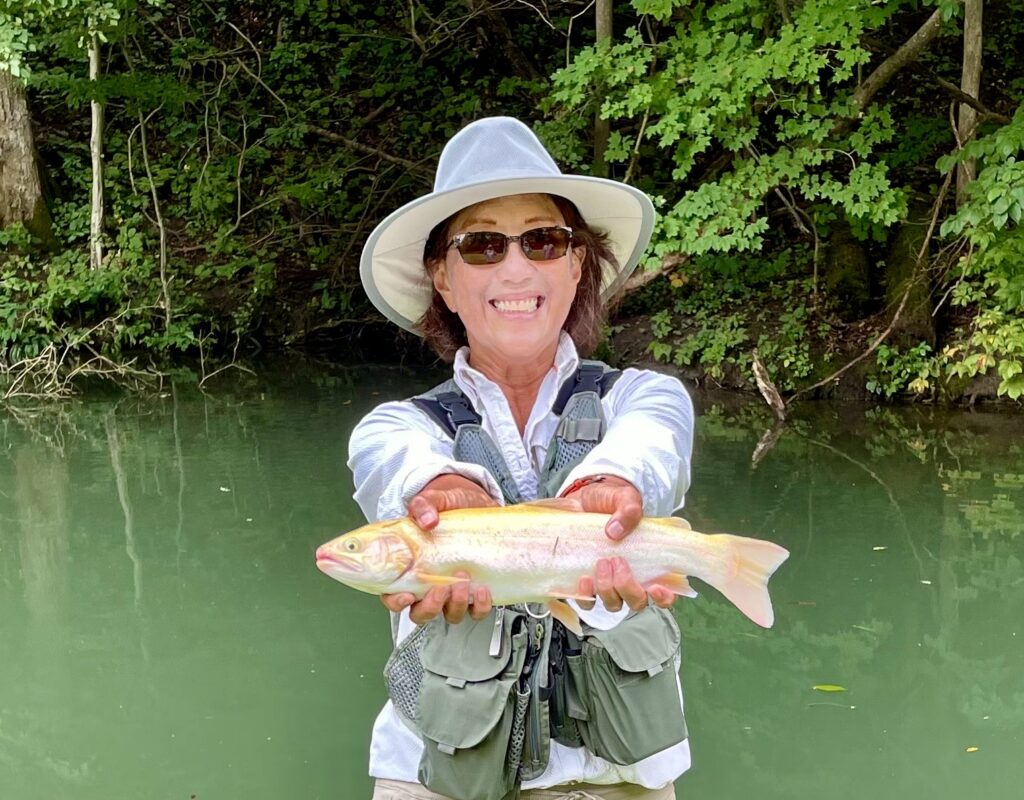
Conclusion
In wrapping up, understanding trout’s ability to see color adds an invaluable layer to your fishing strategies. Fly fishing for trout in Ohio can be tough enough, but like with anything where there is an “us and them” component, know everything you can about your foe! It’s clear from decades of research and our own experiences, that trout do indeed perceive colors. This insight means that choosing flies isn’t just throwing out a line in hope. It’s a thoughtful decision. Happy fishing and tight lines my fishing friends!

Author, Drew McCartt, Briarwood’s Director of Sporting Services has been an avid freshwater fisherman for over 50 years, including 30 years of fly fishing and guiding. He has an MS in Freshwater Fisheries Research from The Ohio State University, and a BS in Fisheries & Wildlife Management from University of Tennessee. His published research work focused on bluegill use of shade and predator avoidance as mediated by changing light levels and visual acuity.



